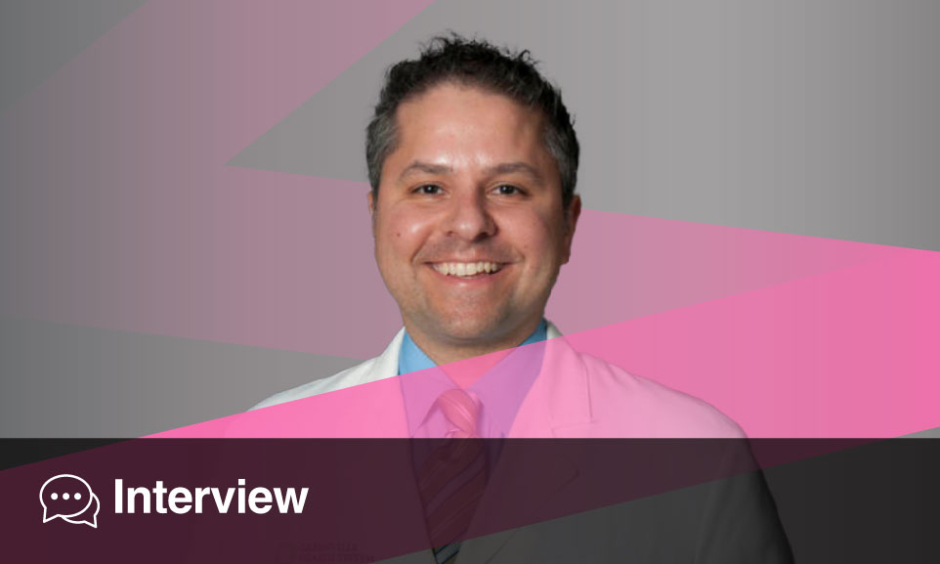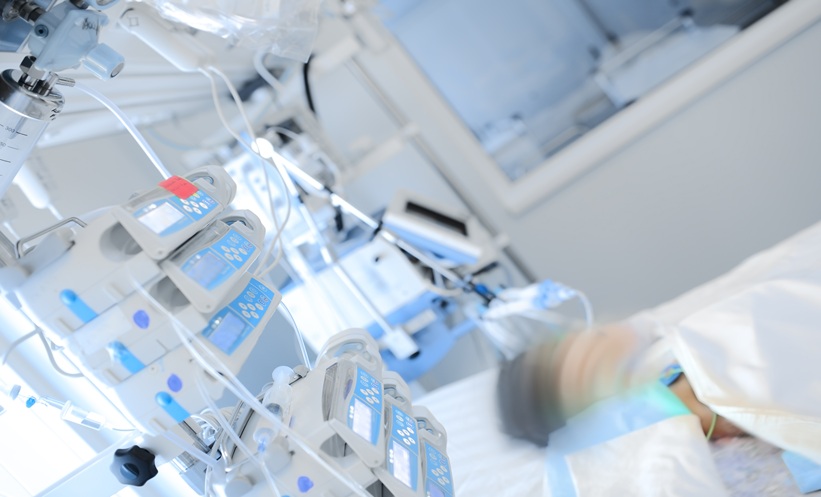Ryan Hakimi | President, American Society of Neuroimaging (ASN); Executive Committee Member, Neurocritical Care Society Board of Directors, Neuroimaging Section Chair, American Academy of Neurology (AAN); Professor, Department of Medicine (Neurology Division), School of Medicine Greenville, University of South Carolina; Founding Medical Director, Transcranial Doppler Ultrasound Laboratory, Prisma Health-Greenville Memorial Hospital, South Carolina, USA
Citation: Neurol AMJ. 2025;2[1]:61-63. https://doi.org/10.33590/neurolamj/SEIU6239
![]()
You began your academic journey as a United States Department of Energy (USDOE) Applied Health Physics Fellow. Could you share how this unique foundation led to your transition into neurology, and specifically into the specialized fields of neurocritical care and neurosonology?
Initially, my career goal was to become a radiologist. I had the unique opportunity to be one of 24 individuals in the US to be accepted to the USDOE Applied Health Physics Fellowship, a 2-year fully funded fellowship that would prepare me for the technical aspects of radiological care and strengthen my scientific basis for the field. As a medical student, I rotated on two radiology rotations and quickly found that I desired to be part of a clinical care team, and hence selected neurology for my residency, as it integrated neuroimaging into daily care. Neurocritical care was a new field in the mid-2000’s and I enjoyed the challenge of integrating neurology with acute care medicine, as well as being the first Doctor of Osteopathic Medicine (DO) to enter the field. During my time as a fellow, I fell in love with neurosonology and elected to make it my life’s passion, ultimately ascending to the President of the American Society of Neuroimaging (ASN).
You played a key role in developing the neurology curriculum for medical students at Oklahoma State University College of Osteopathic Medicine (OSUCOM) in Tulsa, Oklahoma. What core areas of neurology did you prioritize, and how do these align with the evolving needs of future physicians?
Owing to the fact that ≤1% of medical students select neurology for their residency, it is important to prioritize what every physician (regardless of specialty) should know about neurology. This includes how to do a neurological examination, as well as the basics of diagnosis and treatment for common neurological conditions including stroke, epilepsy, multiple sclerosis, and dementia; all of which are becoming more common as the population ages.
You authored post-cardiac arrest hypothermia protocols for Durham County Emergency Medical Services (EMS) in North Carolina, and later co-developed Oklahoma’s statewide protocol for post-cardiac arrest treatment. How have these protocols impacted patient care at both local and state levels?
The number one cause of death for cardiac arrest survivors who make it to hospital admission is neurological death from brain swelling. At the time, data suggested that pre-hospital cooling of cardiac arrest survivors by EMS would improve outcomes. I chose to partner with the EMS leadership teams, first in Durham County, North Carolina, where EMS were governed on a county level, and later in Oklahoma, where it was centralized at a state level, to determine the best way to implement this process for the communities that they served, including purchase of special refrigerators to carry cold IV fluids in EMS trucks. This allowed me to develop my expertise in the field and ultimately establish neurocritical care as the admitting service for all patients with cardiac arrest at the University of Oklahoma Medical Center. We set up our own resuscitation bay in the emergency room to facilitate this time-sensitive care, leading to improved outcomes in our patients.
As a collaborator in the Curing Coma Campaign, what are some of the most groundbreaking research projects you’ve been involved in? How do these findings translate into improvements in clinical practice for neurologists and intensivists?
We are just now learning about disorders of consciousness, which were not well differentiated in the past. The description of a minimally-conscious state and the concept of covert consciousness has led to a greater amount of patience with brain injury survivors, affording them more time to demonstrate clinical improvement.
As Director of Transcranial Doppler Ultrasound Services at Prisma Health-Upstate, what initiatives have you spearheaded to enhance patient care? Additionally, could you explain the clinical applications and benefits of transcranial Doppler (TCD) ultrasound in neurology?
TCD ultrasound is a safe, bedside, portable, non-invasive tool which allows one to evaluate cerebral blood flow in the major blood vessels in the brain. It is part of standard of care during the daily evaluation of patients with subarachnoid hemorrhage from ruptured brain aneurysms, allowing the identification of patients at risk for strokes, thereby guiding medical decision making. TCD is also used for diagnosis and guidance of treatment decisions in patients with acute ischemic stroke, patent foramen ovale (the persistent presence of a hole between the right and left side of the heart), and for guiding blood thinner management. Less than 10% of the 350+ Comprehensive Stroke Centers in the US are accredited to perform and interpret TCD, although they all require the availability of TCD. We were able to establish our program in 2019, achieve site accreditation in 2021, and have the largest number of TCD certified technologists in the nation.
You were the first fellowship-trained DO neurointensivist and the first DO to be designated as a Fellow of the Neurocritical Care Society (NCS). What advancements have you witnessed in neurocritical care since your training?
In the US there are two kinds of physicians that practice medicine. Medical Doctors (MD) and DOs. Both have equal scope to practice in all disciplines of medicine in all 50 states. However, prior to 2015, when the two entities merged the accreditation body of their residencies, DO physicians were not afforded all of the same opportunities as MD physicians for training and hospital practice. At the time of my training, neurocritical care was a new field whose legitimacy was not uniformly accepted, and thus, there were very few residents who were entering the handful of fellowship programs available. I was the first DO to complete a 2-year neurocritical care fellowship program. I have been the founding Medical Director of two academic neurocritical care units; first at the University of Oklahoma and now at the University of South Carolina-Greenville (Prisma Health-Upstate). For this accomplishment, and my contributions as one of the world leaders in neurovascular ultrasound, as well as education and advocacy for the NCS, I was fortunate to achieve the designation of Fellow of NCS, a designation held by about 50 individuals worldwide at the time. In the past 15+ years of practice, I have seen the establishment of mechanical thrombectomy (removal of a blood clot from a brain artery) become the standard of care for acute ischemic stroke, allowing neurointensivists and neurointerventionalists to help minimize brain injury in patients with stroke, thereby reducing their level of disability and improving survival.
Therapeutic hypothermia is one of your key research interests. Could you elaborate on its mechanisms and how it improves patient outcomes, particularly in neurocritical care settings?
It is uniformly known now that fever worsens neurological outcome in patients with a brain injury by increasing the brain’s metabolic demand. The increased metabolic demand ultimately leads to greater brain swelling, which can lead to death. Targeted temperature management reduces the brain’s metabolic demand by cooling the patient, and therefore minimizes the brain injury and reduces the probability of death.







